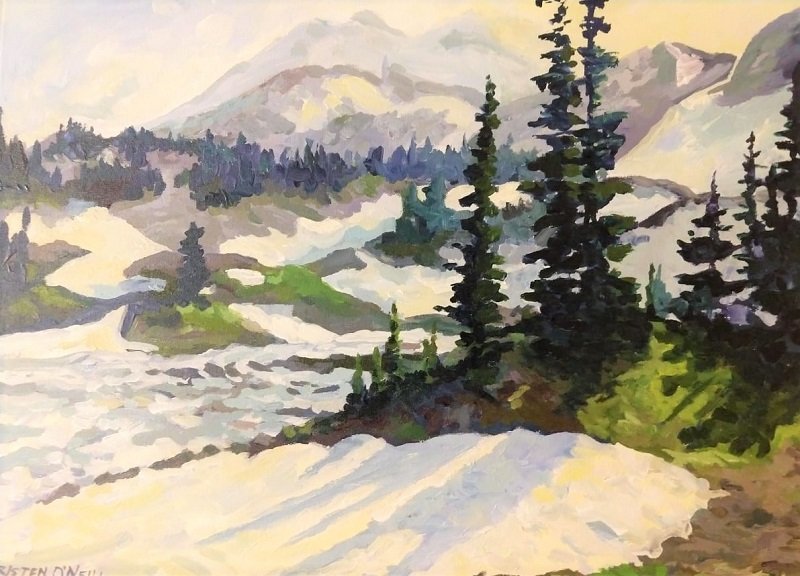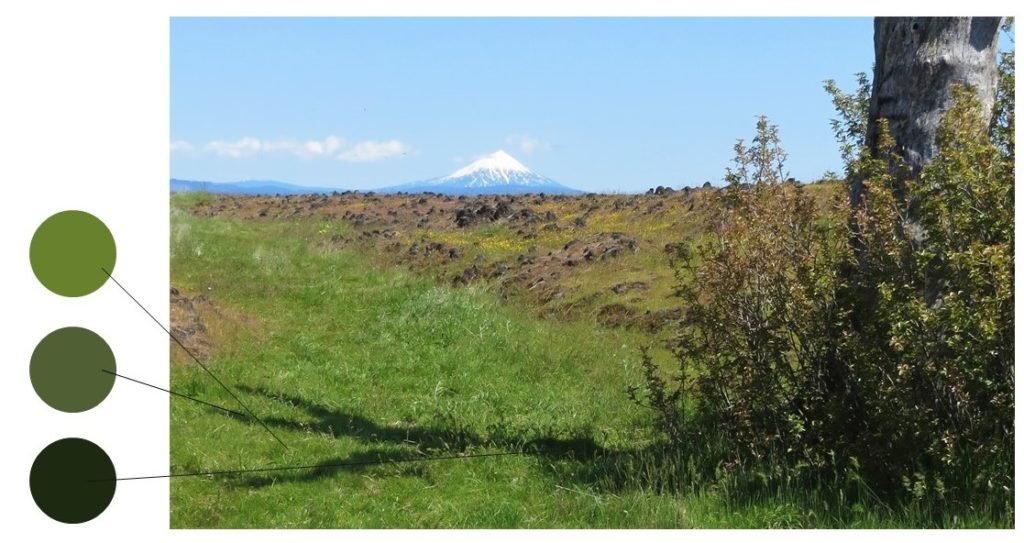
Shadows Aren’t Black – no matter what your brain says
Our brain is going to try and jump in and rescue us with its knowledge about the world while we paint. The funny thing about brain knowledge is that it is usually fact-based, not visual-based. A table has four legs, so I better draw all four. Or shadows are black. But wait! Shadows aren’t black – they are DARKER.
You may be thinking, “Okay, so I reach for the black and add a bit of that to my color that I am using.” Maybe. … But maybe not. Usually not. Okay, probably never not. Wait – double negative. Let’s go with: There is a better way. Step away from that black tube!
“What is the problem with adding black?” You may understandably ask. Black dulls out color. It stripes away all the light that you have so carefully kept in your color while mixing. Aside from that, it usually isn’t the right choice for what is really going on with the light.
Blue Light
A great example of this is snow. The basic overall “color” of snow is white (actually it is reflection, but reflection isn’t really a color, well, neither is white… okay, back to the main story here). The snow is reflecting daylight. What happens in the shadow of a snowbank? Is the snow gray? No! It is blue, or bluish-purple. Why??? The same reason the sky is blue! Blue (as light-wave) has a shorter wavelength and then can bounce off particles in air, or snowy-bits and scatter more. Thus, you see more of the blue from the original white light of the daylight.
Snow is in an interesting case because the amount of light it reflects. Other surfaces and objects are reflecting light too. If they weren’t it would be like standing inside a dark cave with no flashlight. Part of the color of the object is reflected in the shadow. The main influence in the color of the shadow is where the shadow is falling upon. A shadow must land somewhere for us to see it.
The Role of Where the Shadow Lands
Imagine a green lawn. No matter what creates the shadow on the lawn, the most influential color is the color of the lawn. Then that shadow color needs to be darker in value. A great way to do this is to add the complimentary color. This grays out the existing color. So, for a bright green lawn, add a touch of a red. This brings the intensity of the color down. Then add a tiny touch of blue. Advance students – try playing with warmer shadows. Add a touch of purple (perhaps Dioxazine).

Shadows are a touch blue. Not overwhelmingly blue (except perhaps our buddy snow). Most cameras for years have over-captured the blue wavelength for shadows. If you are using a photo as a reference, take it easier on the blue then the camera says. (Newer smartphones have started to address this and filter out more of the blue.) Cameras catch the idea of something, not the absolute truth. Feel free to break away from what they show.
Shadows are darker the closer they are to the object that is casting them. As the shadow lengthens away, other light has more opportunities to bounce around and through the shadow. Slowly lighten the value as it has more distance.
Recap:
- Your brain is trying to be helpful by telling you “facts.” Thank it and then tell your brain that it isn’t invited to this painting party.
- Shadows aren’t black!
- Shadows are bluer – like the sky – and for the same reason. Yay, physics!
- Everything is color and light that we see – try to keep the color in your work
- Black dulls out color. It just sucks the life right out.
- Shadows are darker closer to the object
- Cameras catch the idea of something, not the absolute truth.
Cameras catch the idea of something, not the absolute truth.
Kristen o’Neill
